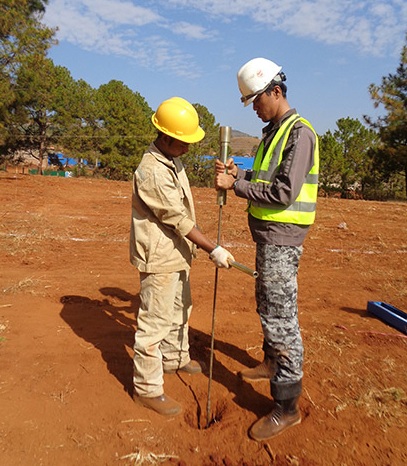In this post, we will talk about Mackintosh Probe Test. The Macintosh probe test is used for research purposes, especially soil exploration. The Macintosh Probe Test is used to determine the bearing capacity, that is, the strength of the soil. The results obtained from the test provide a rough estimate of the soil layer at that point.

A variety of dynamic and static penetrometers are available, with different types used for different substrate material conditions. However, the goal of all sounding is the same. In other words, to obtain a penetration resistance profile with depth to evaluate the in situ variabilities of materials in situ. Quickly perform sounding using simple equipment. It gives a simple result in terms of hits per unit of penetration depth, typically displayed as a hit/depth graph.
One of the most common types of probing is the Macintosh probe. The Macintosh reconnaissance tool consists of a rod that can be threaded into a barrel connector and usually has a driving point at the base and is provided with a light manually driven hammer at the top.
This instrument provides a very economical way to measure the thickness of soft sediments such as peat. The driving point is streamlined with a longitudinal section up to 27 mm in diameter. The total weight of the driving hammer is approximately 4 kg. The length of the rod is 1.2 m and the diameter is 12 mm. This device is often used to achieve a depth profile by pushing the tip and rod into the ground with a blow equal to the full height of the hammer drop. The number of blows for every 150 mm penetration is recorded.
An auger or core barrel can be used as the actuation point if it is necessary to penetrate small pockets of dense clay. The rod can be rotated clockwise from the ground using a ring wrench. Tools can be pushed in and out of the ground using lifting and transport tools. The small weight of the hammer limits the depth and material a Macintosh probe can penetrate (Clayton C.R.I., Matthews M.C., and Simons N.E., 1995).
